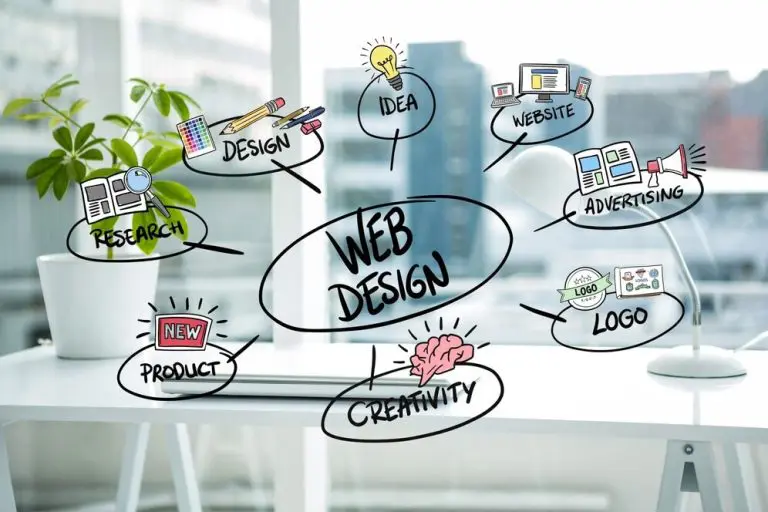You’re staring at your computer screen, torn between two options. On one side, a sleek website builder that screams professionalism but costs more than your monthly rent. On the other, a bare-bones template website builder service that’s free but looks like it was designed in 1999.
Is this really the choice we’re stuck with in 2024 when it comes to free website design?
Here’s the truth: beautiful web design doesn’t have to break the bank. But it does require something far more valuable than money – creativity and a willingness to learn.
I’ve spent years helping small business owners create stunning websites and blogs, on shoestring budgets. Along the way, I’ve uncovered access to a goldmine of free resources and unconventional strategies marketing tools that most “experts” won’t tell you about.
Why? Because they’re too busy selling overpriced services to clients and customers who don’t know any better.
But you’re different. You’re here because you refuse to believe that great design is only for those with deep pockets. And you’re absolutely right.
In the next few minutes, I’m going to show you how to build and customize a website or blog that not only looks professional but also converts visitors into customers – all without spending a fortune.
We’ll explore hidden gems in the world of free website design tools, reveal the psychology behind effective search and layouts, and learn how to avoid the budget-killing mistakes that plague most DIY attempts at business online.

Lower your delivery costs by 23%
How we reduce costs:
- No delivery vehicle expenses
- Optimized local routes
- Pay-per-delivery model
- Average 23% delivery cost reduction
Step 1: Affordable Web Design Strategies For Online Store
-
You will learn how to set clear goals for your website design.
-
You can find budget-friendly designers with some research.
-
Learn to negotiate pricing for favorable terms.
Identify Your Website Goals
Understanding what you want your website to achieve will shape all other decisions. First, you should be clear about the main function of your website. Is it to show your portfolio, own images, run an online store or shop, or offer information? This focus will help avoid spending money on unnecessary features.
Define the Main Purpose of Your Website
Think about why you need a site. It is better to write down its primary goals. A clear goal is necessary to make sure every part of your business website or design serves a purpose. You should spend some time doing this to ensure you do not get off track.
Determine the Essential Features Needed
After setting your main goal, list out the features needed to grow your business and support it. If it’s an online store, for ecommerce features you’ll need an e-commerce tool. For portfolios, consider multimedia displays. You shouldn’t go overboard. Only list what’s necessary to support and grow your business, site’s function and user needs.
Research and Compare Budget Options
Finding a good web developer within budget takes time but can save money. Look at multiple sources business online, to get a well-rounded view of rates and capabilities.
Explore Freelance Platforms
Platforms like Fiverr and Upwork are good places to find affordable talent. You should search for designers within your budget and look through their reviews and prior work. These platforms let you see a wide variety of skill levels and price ranges.
Compare Rates and Portfolios
Once you have a list of potential designers, compare their rates and examples of past work. It is better to look for both quality and style that matches your vision. This is key to knowing if they can meet your needs within your budget. Rates can vary from $500 to several thousand dollars based on complexity and scope.
Negotiate Terms and Costs
Open communication about financial constraints can set expectations on both sides. This way, potential designers can tailor their process and customize their proposals to fit your needs.
Communicate Your Budget Upfront
From the start, let designers know your exact budget to avoid wasting time on proposals that exceed it. You can ask them what they can offer within your price range, and be open to suggested adjustments to features.
Request a Detailed Proposal
Before making a decision, ask for a detailed proposal. This proposal should include a breakdown of costs for every element of the project. This helps to pinpoint where you might adjust the scope for potential savings. A clear breakdown also ensures no unexpected fees appear later.
By clearly defining your website goals, researching budget options carefully, and negotiating effectively, you can manage costs without sacrificing quality. These steps create a foundation for building a professionally designed, visually appealing business website that hits all the right notes without overspending. To further assist you in your website design journey, it’s beneficial to explore various options available to you. For instance, reviewing different website design software can help you compare top picks that fit your business’s needs. Check out this guide on the best website design software to make an informed decision.
Additionally, for more insights tailored to local businesses, you can discover useful tips and tricks related to effective website design that can significantly improve your online presence.
To further empower local business owners, exploring specialized website design strategies for local businesses can make a substantial difference. These tips cover everything from optimizing for local SEO to making your site more user-friendly for your community, helping you attract and retain local customers effectively.
Step 2: Budget-Friendly Website Design Tools
-
Free builder platforms help you start without spending money.
-
Royalty-free resources make sites look professional without cost.
-
You can create a site for free, but it might have limits.
Utilize Free Website Builder Platforms
Free website builders are a great way to kickstart your site on a budget. Platforms like Wix, WordPress.com, and Weebly offer free website builder plans that come with basic features you need to set up a simple, effective online presence. These free website builder platforms are beginner-friendly, often featuring drag-and-drop interfaces and pre-designed templates.
However, free website builders come with limitations. Often, you must use a subdomain such as yourname.wix.com instead of a full custom domain name, which requires payment for hosting the domain alone. Additionally, storage and bandwidth may be limited, and your site will likely display third-party ads unless you upgrade. Despite these constraints, they are excellent for individuals or small businesses beginning their online journey.
1 in 4 people appreciate the ease of these platforms when starting out. When users need more freedom and features, many transition to a paid plan as their websites grow. This upgrade typically offers more control over your domain, website builder, design and branding, such as removing ads and connecting your pages to a more custom domain name.
Explore Free Design Resources
If you’re aiming for an attractive website without hiring a designer, tap into the wealth of free design resources. Many platforms offer free themes and templates that can be customized to match your brand. Discover templates for website design that can elevate your brand’s online image without the need for a designer.
Using free assets to create or customize something is particularly advantageous when you’re on a tight budget. However, customization sometimes comes with challenges. Free designs might not offer the flexibility or uniqueness you want, and they may not always be optimized for all devices, affecting user experience. Luckily, many platforms often update these resources, adding new designs regularly.
Addressing the Often-Googled Question: How Do I Make My Own Website Totally Free?
Building a website without costs involves using specific platforms marketing tools and resources that don’t require any upfront payment. You can use AI website builders like Wix or Weebly to create a basic site. However, your site often resides on a subdomain and may display ads. For those wondering about creating and hosting a site on platforms like Google, Google Sites offers a completely free website builder option, ideal for basic projects and internal purposes.
Running a community site entirely for free is feasible but not always sustainable if you plan to ever grow your business or need advanced features. The main downside is the potential lack of ownership and the ability to fully control branding elements. Many users initially start their community together for free and later transition to a paid model to gain more control and advanced functionality.
Step 3: DIY Free Website Design Tips
-
Learn the basics of design to keep things simple and clean.
-
Use free resources to build skills without spending money.
-
Practice makes perfect. Build small projects to improve.
Learn Basic Design Principles
Importance of Consistent Color Schemes and Typography
Consistency is key. Your website’s color palette and fonts set the mood. Stick to 2-3 main colors. You can use them throughout your site for uniformity. It is better to choose fonts that are easy to read and match your brand. A good mix of color and font creates a cohesive look. This keeps visitors’ attention and makes navigation easier.
Understanding Layout Hierarchy and Navigation Simplicity
You should make sure your layout is simple and clear layouts guide users. It is better to place the most important information at the top. You can break content with Search engines using Google Analytics. And create good headings and subheadings for clarity. An intuitive navigation menu ensures users find what they need without trouble. You shouldn’t overwhelm users with too many menu items.
Use Tutorials and Online Courses
Free Resources Like YouTube and Coursera for Web Design Tips
Online resources are your friend. Platforms like YouTube and Coursera offer free courses on web design. Watch tutorials to grasp the basics. Check for playlists or courses focused on beginners. Learn at your own pace. The variety of tutors allows you to find teaching styles that suit you. This is a cost-effective way to build foundational skills without committing to expensive programs.
Importance of Hands-On Practice by Building a Simple Site Prototype
Knowledge without practice isn’t enough. Build a simple site prototype as you learn. Start small, maybe a single-page site. You can use the skills from tutorials. Adjust as needed. This hands-on work cements concepts. You’ll learn by trial and error. It helps in understanding practical challenges and solving them in real-time. Building prototypes boosts coding knowledge and confidence, making more complex designs easier down the road.
"Design is not just what it looks like and feels like. Design is how it works." - Steve Jobs
Learning a few basic design principles and practicing what you’ve learned by building small prototypes can make a big difference. It can even change how you approach web design altogether. Always remember, consistency and simplicity lead to clean, user-friendly websites. Try making design decisions with function in mind first. This will keep your site easy to understand and navigate.
Conclusion
Creating a stunning, professional website while on a budget isn’t just possible—it’s an opportunity to showcase your creativity and business savvy. By leveraging free tools, mastering basic design principles, and avoiding common pitfalls, you’ve unlocked the potential to craft a digital masterpiece without breaking the bank. Remember, a beautiful, professional website isn’t about flashy features or expensive plugins. It’s about clarity, purpose, and user experience. For those concerned about expenses, it’s crucial to understand the full scope of costs associated with website design. Ignoring hidden fees can lead to unpleasant surprises that undermine your budget. To delve deeper into the specifics, consider reviewing this insightful article on the cost breakdown of website design and hidden fees that could impact your financial planning.
As you embark on this business online journey, keep your goals in sharp focus. Each design choice should serve your business objectives and resonate with your audience. You shouldn’t be afraid to start small and grow. Your free website design, in person events, like your business in person events, is a living entity that will evolve.
The skills you’ve gained aren’t just for this project—they’re design and SEO tools for life in the digital age. With each tweak and improvement, you’re not just building a website; you’re crafting a platform and the face of free website for your brand’s future. So go forth, create with confidence, and watch as your budget-friendly beautiful website becomes the cornerstone of your business grows online success.





























